The AI-driven dynamic menu pricing system is all set to give a high-tech transformation to the restaurant industry. In simple words, with technical advancements, AI tools can now assist restaurant owners in setting food prices in their menu based on demand, customer behavior, and trends.
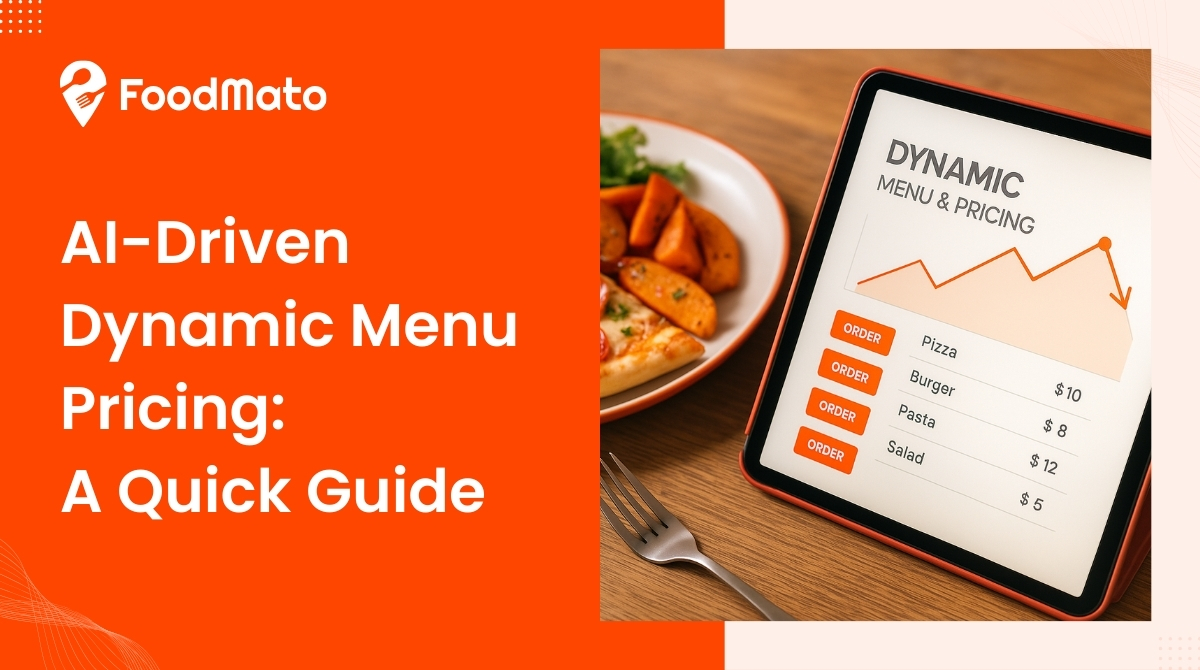
Restaurant owners often have to deal with revenue loss due to market price fluctuations, growing expenses, and inefficient pricing strategies. If this issue sounds familiar to you, you must consider switching to AI AI-driven dynamic pricing method to maximize your revenue. These pricing tools are especially designed to strengthen your menu pricing strategies, increase profit levels, and customer satisfaction.
They thoroughly analyze sales data, cost of ingredients, etc, before suggesting prices for your food items. In this article, you will learn about the concept of an AI-driven dynamic menu pricing system, its benefits, various tools, challenges, and more.
A dynamic menu pricing system is a specialized pricing strategy in which restaurant owners set the price of their food items based on various factors like time of the day, demand, season, etc. It goes against the rule of the conventional static pricing method, in which food items are sold at a fixed price.
For example, a restaurant may slightly increase its food prices during rush hours to balance the growing demand. Similarly, food prices can be reduced during slow hours. The flexibility in dynamic pricing not only allows restaurants to boost profit but also to react promptly to the ever-changing market situations.
Now the question is “how does Artificial Intelligence help in this process?”. Let us figure it out in our next segment.
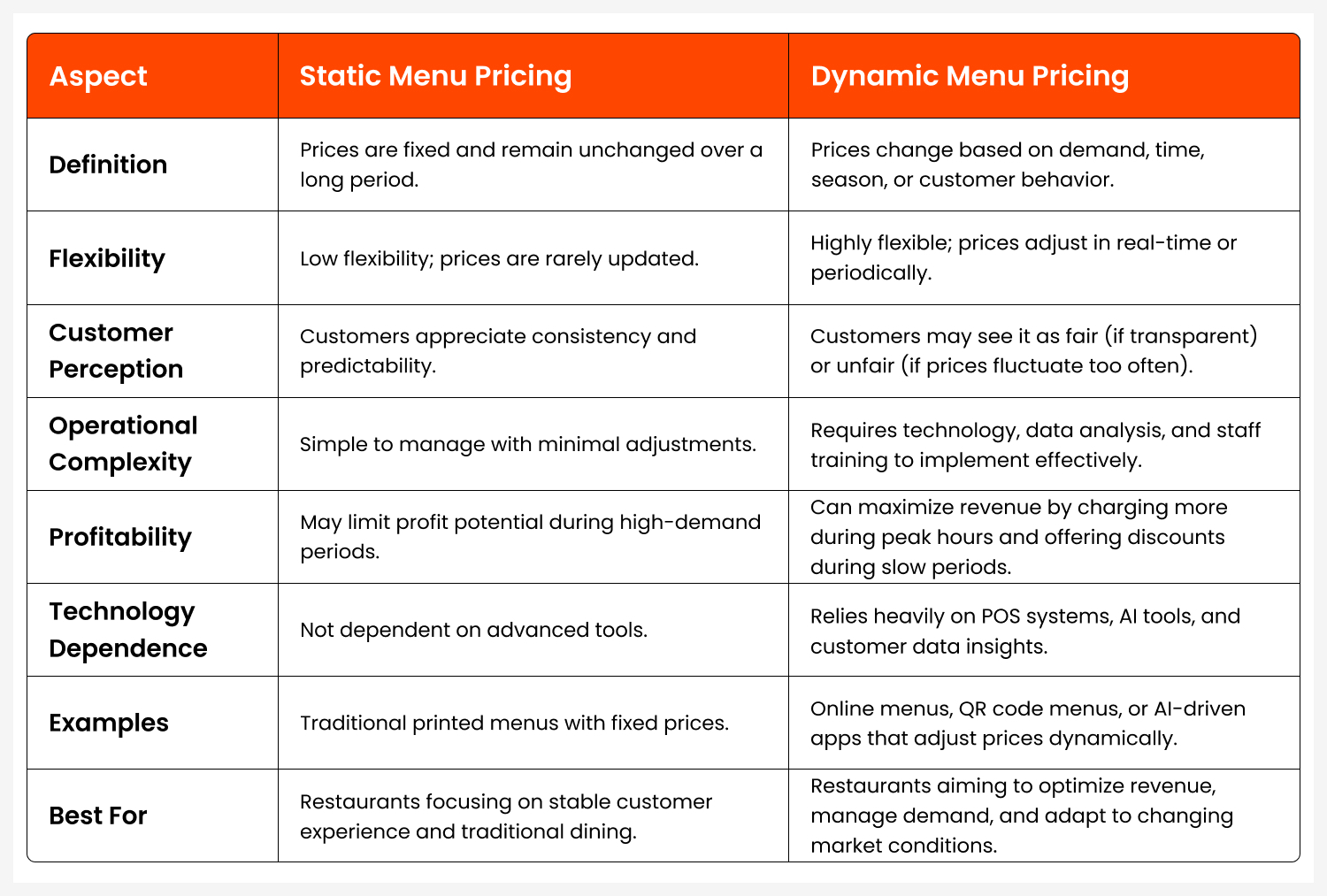
Just like any other tasks, AI automates the work of setting food prices in your menu by analyzing a huge chunk of data for you. It considers multiple factors before finalizing the food price for you. These factors include:
- Seasonal trends
- Time of the day.
- Inventory levels
- Local events
Let us take you through the process that AI uses to set food prices at your restaurant:
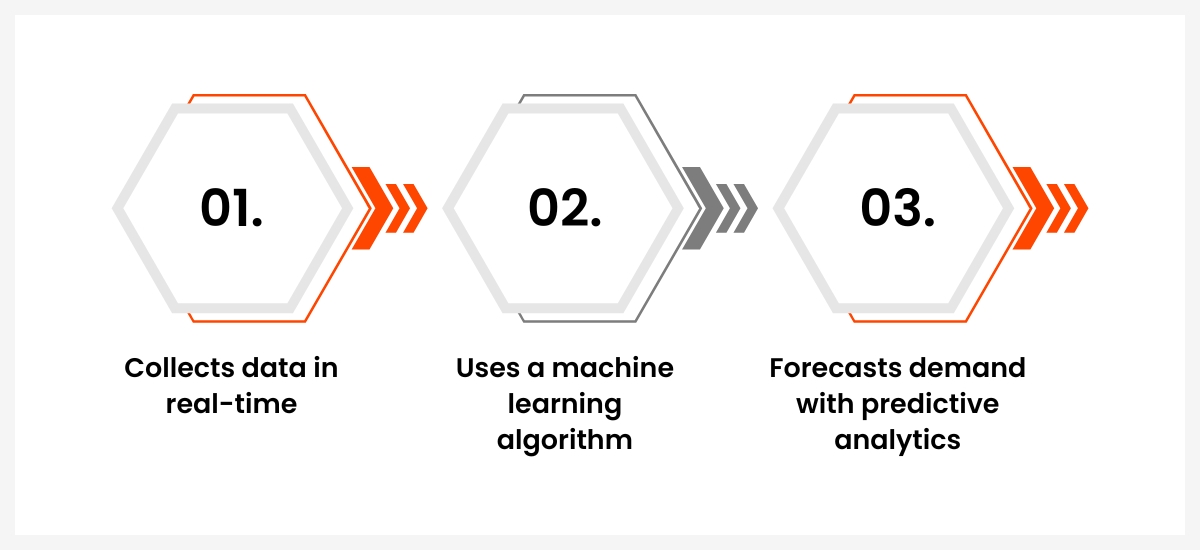
1. Collects data in real-time
AI collects relevant data in real time from various sources that include the following:
- Your competitors’ food prices.
- Customers’ purchasing patterns through order history, preferences, and more.
- Changes in demand due to seasons, festivities, trends, etc.
3. Uses a machine learning algorithm
Ai not only tracks your restaurant data but also closely observes it to improve your dynamic pricing strategies.
- It tracks your restaurant’s sales data to predict demand for specific food items.
- Examines multiple pricing situations and picks the best one.
- Prevents financial loss by adapting to increased demand and supply chain issues.
4. Forecasts demand with predictive analytics
AI tools can accurately forecast demand for food items and help restaurant owners rate the items on their menu accordingly.
For instance, AI may suggest increasing the prices of Christmas cookies during winter if it observes an increase in internet searches for them at that time based on its data analysis. On the other hand, when the demand drops, it may recommend offering discounts on them to maintain sales.
Now that you know how the AI analyses demand for food items and suggests pricing based on that, let us explore the benefits of AI-driven dynamic menu pricing for restaurant owners.
AI-driven dynamic menu pricing comes with multiple benefits, which is why more and more restaurant owners are adopting the new technology for revenue growth.
Some of the notable ones are mentioned below:
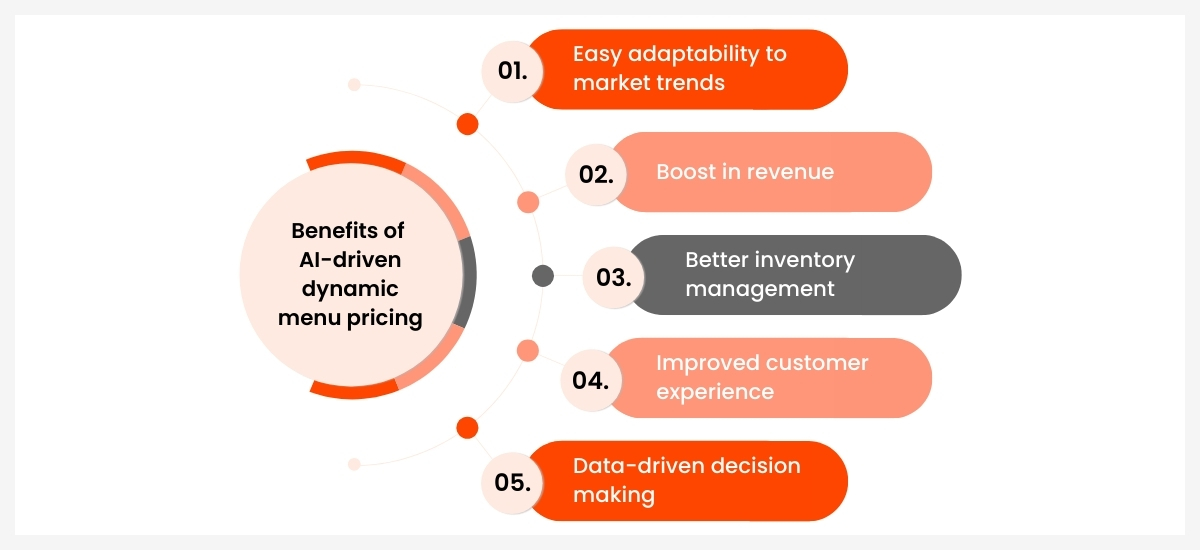
1. Easy adaptability to market trends
Restaurants can keep their food prices depending on the current market trends and competitor analysis. This keeps the food prices flexible and helps restaurants take necessary steps to adjust to the market fluctuations.
2. Boost in revenue
Keeping the food prices based on demand increases the sales and revenue of a restaurant to a great extent. High food prices during peak hours boost profits and lower prices when the demand goes down help attract more customers. In both ways, the overall sales are balanced, which maintains a smooth flow of revenue.
3. Better inventory management
AI’s data analysis also covers scrutinizing the available resources and ingredients for food items, which allows restaurant owners to adjust prices according to their availability. It helps reduce food waste and optimally utilize the available resources.
4. Improved customer experience
AI-driven menu pricing offers customers a personalized pricing experience, which ultimately increases their satisfaction level and brand credibility.
5. Data-driven decision making
For dynamic menu pricing, AI utilizes your restaurant’s sales history, customer behavior, local events, market situations, and seasonal demands for specific food items before suggesting prices. This empowers your restaurant with accurate data and data-driven decisions.
After considering all the above-mentioned benefits, if you have made up your mind to adopt AI for dynamic menu pricing, we are here to help you with some good AI tools for the same. Find them all in the next segment.
As the AI technology is flourishing with each passing day due to its growing demand, you will find a wide range of options on the internet that may overwhelm you. To narrow down your options and find the best one for your business, we have handpicked some of the AI tools for dynamic menu pricing that you may consider for your business.
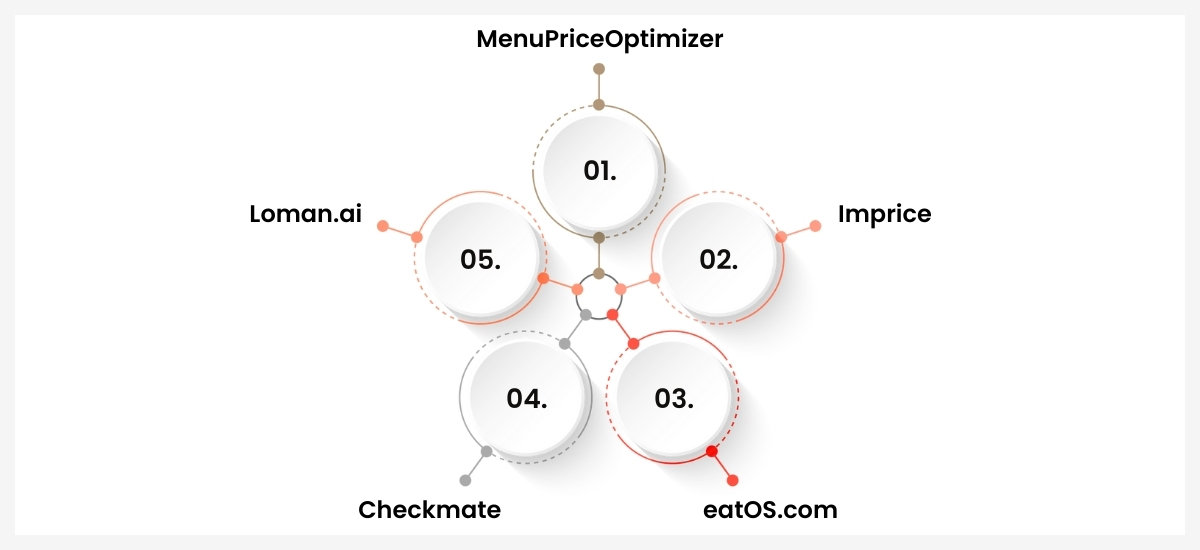
- MenuPriceOptimizer: this AI tool is exclusively built for restaurants to help them set dynamic menu prices after analyzing the cost of ingredients, customer behavior, and competitor pricing. It is available for Europe, the UK, North America, and the Asia-Pacific markets.
- Imprice: Another exclusive AI tool for dynamic menu pricing is Imprice, which is designed for real-time food price optimization. One of the biggest advantages of this tool is that even if your restaurant lacks detailed historical data, it analyzes demand, expenses, competitors, and inventory levels to suggest a suitable price for your food items.
- eatOS.com: It offers a specialized AI tool for dynamic pricing that seamlessly integrates with your existing restaurant management system. It gives you useful insights into your menu performance and optimizes pricing in real-time according to the market conditions.
- Checkmate: The next in our list is Checkmate, which is known for its powerful features that allow restaurants to monitor competitors’ prices, scrutinize sales data, and add dynamic prices to food for maximum profitability.
- Loman.ai: Last but not least, Loman Ai is another AI-based platform for dynamic menu pricing that scans through customer preferences, market scenario, and demand to suggest suitable pricing for your menu items.
As AI is still in its developing phase, the technology poses a few challenges for the users, which you must be aware of.
Ethical Concerns And Customer Perception
Restaurants adopting dynamic pricing need to maintain transparency with their customers so that they understand the motive behind the ever-changing food prices. That is why it is recommended for restaurant owners to add clarity to customers on their pricing strategy and maintain reasonable food prices at every stage to increase credibility.
Security and Privacy concerns
If you are willing to use an AI-driven menu pricing system, then make sure you take extra care of the privacy and security of your customer data. Also, check if the system you use follows privacy laws, as a lot of confidential data, like credit or debit card information, buyer preferences, and behaviors, is tracked in this process.
Maintaining a balance between AI automation and human decision-making
No matter how accurately AI analyzes your restaurant data to suggest the most suitable price for your food items, human intervention is an absolute necessity. Restaurant owners, before finalizing the food prices, should also consider the areas understanding which are beyond AI’s capacity, like certain situations, localized knowledge, etc.
The Future of AI-Driven Dynamic Menu Pricing for Restaurants
AI is expected to become more powerful with technical advancements in the future, which is sure to bring more convenience to restaurant management.
Here are the things that we can expect in the future:
- Hyper-personalized menu prices for each customer.
- Demand forecast for food.
- Seamless AI integration with various platforms like POS systems, delivery apps, etc.
- Global acceptance of AI.
Many restaurants also face the choice between using a third-party vs an in-house food ordering system, which directly impacts how well dynamic pricing strategies perform.
To conclude, we could say that the future of AI-based dynamic pricing is all about personalization, predictive analysis, cross-platform integration, and transparency.
Stay connected with us on social media: Follow Foodmato on Facebook for the latest updates, tips, and exclusive offers.

